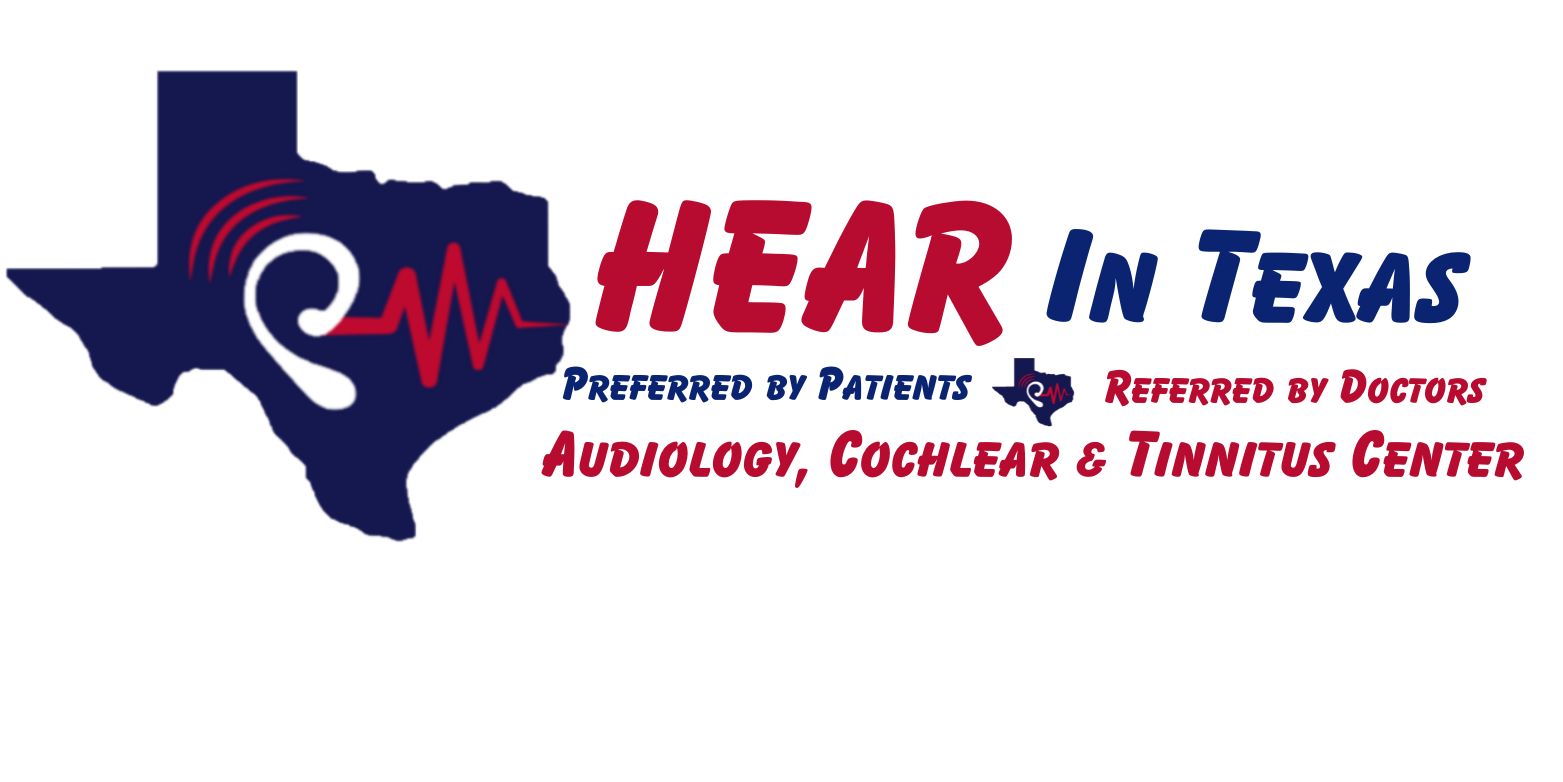HEAR IN TEXAS
Positional Vertigo
Hear In Texas Treats Positional Vertigo

Dizziness, vertigo, and balance disorders are common conditions affecting about 90 million Americans during their lifetime. For most, vertigo is an inconvenience, but more than one-half of the accidental deaths in the elderly and over 300,000 hip fractures in individuals over age 65 are from balance-related falls associated with positional vertigo.
Vertigo and unsteadiness on your feet are toward the top of the list of complaints by patients over 70 years of age. Keeping your balance requires multi-sensory coordination of your vision, your vestibular system, and your proprioceptive system (sensory input from our muscles and joints).
Vertigo and balance disorders come from any disturbance or malfunction in one or a combination of these systems that depend on your ears in order to function correctly. Hear in Texas helps thousands of people deal with positional vertigo as a part of our commitment to the overall health and hearing health of the New Braunfels community.

What Do Your Ears Have To Do With Vertigo And Balance?

Your ears play a critical role in helping you stay steady on your feet or stay balanced as you change positions. The vestibular system, responsible for helping with balance, is located in the semicircular canals of your inner ear, functioning like the bubble in a carpenter’s level in order to help you maintain your balance.
As the fluid inside the semicircular canals interacts with hairlike cells along the walls of the canals, detecting up, down, and side-to-side movements, signals related to your position are transmitted to your brain. When your brain receives these signals, it directs other parts of the body to react in order to keep you upright.
Disorders of the vestibular system cause the fluid or hair cells to overreact to minor movements or even when you are completely still, causing serious problems like vertigo, imbalance, nausea, and vomiting. Vestibular system damage can affect people of any age due to disease, syndromes, toxins, or trauma.
The Symptoms Of Positional Vertigo

A sense of dizziness, vertigo, or motion intolerance, which can follow rapid head movements or turning too quickly, may occur briefly or for several hours at a time. Sensations of vertigo include a persistent feeling of unsteadiness or imbalance that makes it difficult to sit up in bed, get up from a chair or walk.
Vestibular migraines, classified as a strongly hereditary neurological disorder, are also related to vestibular system damage, affecting one in every four females and one in every six males. These migraines tend to cause dizziness, vertigo, nausea, eye pain, and changes in vision rather than the splitting headaches usually associated with migraines.
The Symptoms Of Positional Vertigo

Types Of Vertigo And Balance Disorders
Deterioration of the inner ear structures, either as you age or due to some other cause, produce hearing loss but might also produce vertigo or a balance disorder. Damage to your inner ear structures can also derive from various illnesses or injuries, such as:
01
Labyrinthitis or Vestibular Neuronitis
Deterioration of the inner ear structures, either as you age or due to some other cause, produce hearing loss but might also produce vertigo or a balance disorder. Damage to your inner ear structures can also derive from various illnesses or injuries, such as:
02
Meniere’s Disease
Involves an increased pressure within the labyrinth structure, which typically affects only one ear (though it can affect both). The predictable buildup of pressure before an episode makes it possible to prescribe medications to help manage the condition. Meniere’s disease is usually temporary and goes away naturally after a few years.
03
Perilymph Fistula
Occurs when fluid from the inner ear leaks into the middle ear. It is most common in birth defects, associated with head injuries or surgeries, after a severe ear infection, or as an after-effect of scuba diving.
04
Benign Paroxysmal Positional Vertigo (BPPV)
Involves the migration of calcium carbonate, otoconia from the utricle into one of the semicircular canals, interrupting the normal movement of fluid inside the semicircular canal. This interruption of the natural movement of fluid produces false signals to the brain regarding balance. It is among the most common causes of vertigo.
05
Mal de Debarquement Syndrome (MdDS)
Or Disembarkment Syndrome includes a sensation of prolonged movement like the rocking of a boat or motion of a treadmill even after you have gotten off of them.
How Does Hear In Texas Treat Positional Vertigo And Balance Disorders?

The cause and severity of each condition after diagnosis determines the treatment options applied to correcting, rehabilitating, or managing symptoms.
Medication can treat inflammation-causing infections like labyrinthitis and vestibular neuronitis or help manage the pressure related to Meniere’s disease. Vestibular Rehabilitation Therapy (VRT) is among our most common treatment options for positional vertigo and balance challenges.
VRT involves the use of a series of exercises designed to help desensitize the balance system, especially as it adjusts to certain movements. Its purpose is to allow patients to move around freely without triggering dizziness or vertigo, protecting them from becoming unsteady on their feet and preventing falls.
Among the therapeutic approaches to treat BPPV is Canalith Repositioning, which has produced measurable results for more than 25 years. Success rates for treatment are around 95%, take only minutes to perform, and usually somewhere between 3 and 4 treatments. These maneuvers help move otoconia from the semicircular canal and put them back to the utricle where they belong.
Helping You to Choose the Right Hearing Technology through our Partnerships with all Manufacturers
With each level of hearing loss and person that we help having their own unique set of circumstances, there is never a “one size fits all” approach.
That’s why we partner with every hearing aid manufacturer to ensure that we can always find the right solution for your unique needs.
This also means that we’re often front of the queue to get our hands on the latest hearing technology to ensure that you always have access to the latest developments.

Hearing Health Resources
Latest News

How Hear in Texas Supports Veterans With Hearing Loss
Honoring Veterans With Accessible Hearing Care
At Hear in Texas, we hold a deep appreciation for the sacrifices that veterans have made for our country. As a veteran-owned business, we are committed to serving those who have served us by providing accessible, personalized hearing care.
Our commitment extends beyond mere acknowledgment—we aim to be a cornerstone of support for veterans in managing and overcoming the challenges of hearing loss.
Partnered With the VA: What That Means
Our partnership with the Department of Veterans Affairs (VA) positions us as a VA-authorized community care provider. This collaboration allows us to deliver specialized auditory care that’s finely tuned to the lifestyle and healthcare needs of veterans across Texas.
Every veteran deserves a service provider who understands their experiences and lifestyle nuances, which is why our services are not just about treating hearing issues, but about holistic health improvement.
Eligibility and Referral Process
Navigating healthcare can sometimes be daunting, soour referral processhas been crafted to be as seamless as possible for our veterans.
Request an Audiology Referral to a CCN Provider
Begin by requesting a referral within the VA system for audiology care.
Contact your primary care provider, VA healthcare team, or the Community Care Network, or visit MyHealth.VA.gov to request a referral online.
Hear in Texas Is Your Authorized CCN Provider
As a credited member of the Community Care Network (CCN), we’re poised to offer care once your referral is approved.
CCN Provider: Dr. Celia Miranda (“Dr. Sally”)
NPI #: 1639391451
Location: 2967 Oak Run Pkwy Suite #315, New Braunfels, TX 78132
Schedule Your Appointment With Hear in Texas
With your referral number ready (usually provided in two to three days), call Hear in Texas to arrange your appointment.
You can also opt for the VA healthcare team to schedule this for you at (210) 949-9702.
Receive Your Authorization Letter
After your appointment is confirmed, you’ll receive an authorization letter. This document includes critical details such as the authorization number, information about your approved in-network community provider, and a description of the approved care.
Attend Your Appointment
It’s important to bring your authorization letter, alongside any relevant medical records, to your appointment at Hear in Texas.
What Services Are Offered to Veterans?
Our dedicated services cover a spectrum of hearing health needs to address issues unique to veterans.
Positional Vertigo Management: Understand and manage balance disorders.
Tinnitus Management: Alleviate ringing or noise perception in the ears with our tailored management plans.
Hearing AidsandDevice Repairs: We offer a full suite of hearing aids and assistive devices, backed by repair and maintenance services.
Earwax Removal: Professional care in the removal of cerumen, ensuring auditory health and comfort.
NEXUS Letters: Specialized documentation supporting disability claims related to hearing loss.
Hearing Assessments: Comprehensive testing to track and diagnose hearing capabilities.
Cochlear Implants: When hearing aids aren’t enough, the latest implants can provide significant improvement.
Cognitive Screening: Evaluate cognitive functions affected by hearing loss for an integrated health approach.
Benefits of Choosing Hear in Texas
As a veteran and family-owned clinic,our team of expertsis deeply rooted in the values of integrity, trust, and community spirit.
Ultramodern technology combined with partnerships with leading hearing aid manufacturers guarantees the highest quality care tailored to your needs.
Your unique requirements are put first in every interaction, and you can rest assured we’re committed to supporting your hearing health journey withcomprehensive, long-term solutions.
How to Get Started
Get in touch with our team today and enhance your connection with the world around you!
Request a callbackto talk to our team about any questions or concerns or call us directly at(830) 360-2000.
Schedule a Vestibular Testing
Balance issues can severely affect someone’s quality of life and lead to serious injuries from falls if left untreated. Your audiologist at Hear in Texas has the knowledge, expertise, and experience to help prevent all issues associated with positional vertigo.
If you, or someone you love, are experiencing frequent vertigo or dizziness that is making them feel unsteady on their feet, contact us by submitting the adjacent form so our specialist can help you schedule an appointment.
© Copyright 2025 Hear in Texas. All Rights Reserved. Designed by Topline




